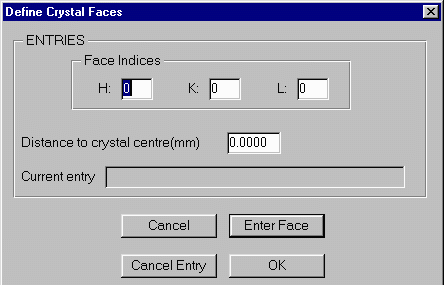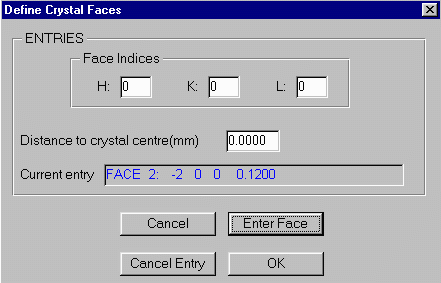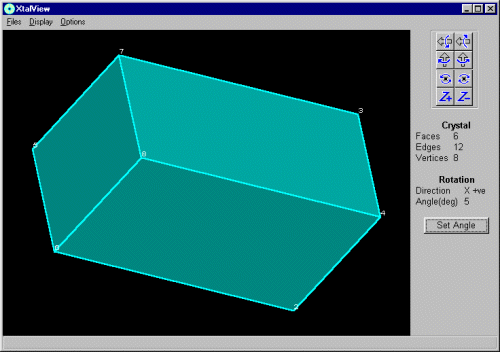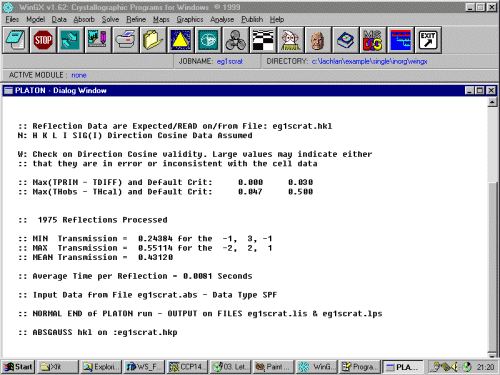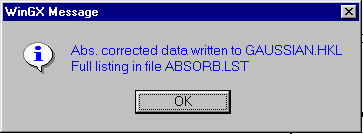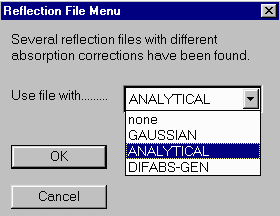
Click on Absorb, Numerical, Gaussian menu option to enter the absorption correction option.
 If WinGX detects an existing faces.def file, which has the indices
and distance information, it will query whether you want to use this.
If WinGX detects an existing faces.def file, which has the indices
and distance information, it will query whether you want to use this.

The faces.def file has the following format (distances in mm)
CELL 13.385 7.422 15.133 90.00 107.70 90.00 FACE 2 0 0 0.12000 FACE -2 0 0 0.12000 FACE 0 2 0 0.12000 FACE 0 -2 0 0.12000 FACE 0 0 2 0.05200 FACE 0 0 -2 0.05200
It is actually easier to edit the faces.def file manually, especially if you have a lot of indices defining the crystal. However for this exercise, we will do this via the menu system which can be quite tedious if you have a lot of faces. Thus we will not use the existing faces.def file. WinGX then prompts with the following Window for you to enter the faces.
